Quick Look
Grade Level: 4 (3-5)
Time Required: 45 minutes
Expendable Cost/Group: US $0.00
Group Size: 2
Activity Dependency: None
Subject Areas: Biology, Life Science, Science and Technology
NGSS Performance Expectations:

| 4-LS1-1 |
Summary
Students learn about biomimicry and how engineers often imitate nature in the design of innovative new products. They demonstrate their knowledge of biomimicry by practicing brainstorming and designing a new product based on what they know about animals and nature.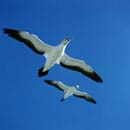
Engineering Connection
Engineers often use the natural world as inspiration for design. Biologically inspired designs include air- and sea-going vessels, navigation tools such as sonar and radar, medical imaging devices, biomedical technologies like prosthetics, and water and pollution treatment processes. Biomimicry has resulted in many creative products, such as a materials inspired by the slick leaves of the lotus plant and its natural capacity to wash away dirt particles with every rainfall, and the Velcro hook-and-loop system inspired by the prickly plant burrs that stick to our clothes.
Learning Objectives
After this activity, students should be able to:
- Define biomimicry.
- Explain how engineers use biomimicry to design innovative new products.
- List examples of engineered products that were inspired by nature.
- Use biomimicry to develop an idea for a new product.
Educational Standards
Each TeachEngineering lesson or activity is correlated to one or more K-12 science,
technology, engineering or math (STEM) educational standards.
All 100,000+ K-12 STEM standards covered in TeachEngineering are collected, maintained and packaged by the Achievement Standards Network (ASN),
a project of D2L (www.achievementstandards.org).
In the ASN, standards are hierarchically structured: first by source; e.g., by state; within source by type; e.g., science or mathematics;
within type by subtype, then by grade, etc.
Each TeachEngineering lesson or activity is correlated to one or more K-12 science, technology, engineering or math (STEM) educational standards.
All 100,000+ K-12 STEM standards covered in TeachEngineering are collected, maintained and packaged by the Achievement Standards Network (ASN), a project of D2L (www.achievementstandards.org).
In the ASN, standards are hierarchically structured: first by source; e.g., by state; within source by type; e.g., science or mathematics; within type by subtype, then by grade, etc.
NGSS: Next Generation Science Standards - Science
| NGSS Performance Expectation | ||
|---|---|---|
|
4-LS1-1. Construct an argument that plants and animals have internal and external structures that function to support survival, growth, behavior, and reproduction. (Grade 4) Do you agree with this alignment? |
||
| Click to view other curriculum aligned to this Performance Expectation | ||
| This activity focuses on the following Three Dimensional Learning aspects of NGSS: | ||
| Science & Engineering Practices | Disciplinary Core Ideas | Crosscutting Concepts |
| Construct an argument with evidence, data, and/or a model. Alignment agreement: | Plants and animals have both internal and external structures that serve various functions in growth, survival, behavior, and reproduction. Alignment agreement: | A system can be described in terms of its components and their interactions. Alignment agreement: |
International Technology and Engineering Educators Association - Technology
-
Students will develop an understanding of the attributes of design.
(Grades
K -
12)
More Details
Do you agree with this alignment?
-
Students will develop an understanding of engineering design.
(Grades
K -
12)
More Details
Do you agree with this alignment?
-
Apply the technology and engineering design process.
(Grades
3 -
5)
More Details
Do you agree with this alignment?
Materials List
Each student needs:
- paper
- pencil
- markers or colored pencils
- ruler
Introduction/Motivation
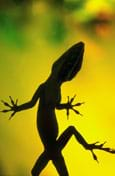
Does anyone know what the word "biomimicry" means? Let's break down the word into more understandable parts. "Bio" means life and "mimicry" means to imitate. So, biomimicry means to imitate life or nature. Who has heard the expression, "Nature knows best"? Well, biomimicry is a way of learning from nature. It is a way to observe nature in action and use that knowledge to inspire new ideas. Engineers often use these ideas to develop cool new products or better ways to do things to help people. Today we are going to learn all about biomimicry and how engineers look at the amazing characteristics of animals and plants to create new or improved product designs.
Can anyone think of an example of biomimicry? Think of something that has been designed with nature in mind. How about Velcro®? Velcro® was invented after a man took a very close look at those little prickly seeds that stick to your clothing when you walk though a field. Water filters are designed like animal cell membranes that let certain things pass through while others are kept out. Also, though planes do not flap their wings like birds, their shapes and the principles of keeping a plane in flight are the same as bird wings. People have also created adhesives that mimic the fascinating and sticky surface of gecko or lizard's five-toed feet. Did you know that? Radar and sonar navigation technology as well as medical imaging was inspired by the echo-location abilities of bats. Also, the solar cells that make up solar panels are designed to mimic the way leaves collect energy from the sun.
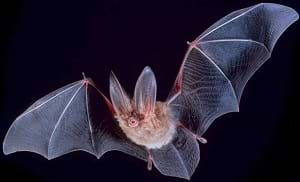
Who created most of these products? Well, engineers, of course! Engineers have also used biomimicry of animals to design things like prosthetics, agriculture methods, navigation tools, and even running shoes. Darcy Winslow, the general manager of environmental business opportunities at Nike, Inc. said, "The extent to which the natural world can provide technological solutions for the types of product performance characteristics we must provide are virtually unlimited. Biomimicry still requires exploration, innovation and creativity, but by thinking like or working with a biologist we must learn to ask a different set of questions and look to nature for inspiration and learning opportunities." Source: The Science Creative Quarterly, http://www.scq.ubc.ca/?p=321.
Engineers definitely look to nature for inspiration and learning opportunities! Another way that engineers learn from nature is to figure out ways to address the pollution that results from making and using products. Nature has a well-defined way of taking care of its "trash," such as dead animals and leaves. Everything in nature is used, even its waste products. Sometimes natural "waste" becomes food for others animals or breaks down into soil nutrients available for reuse. This is a very important model for engineers; we can learn from nature to recycle our resources and not leave a contaminated mess behind every time we make something.
Biomimicry is a process in which you ask the question, "What would nature do here?" Today we are going to be design engineers who use the biomimicry of animals to come up with a new invention! Are you ready?
Procedure
Background: More on Biomimicry
People have called on nature's inspiration throughout humans' history. By observing animals, plants and natural processes, we gain insight into what works and what does not. For engineers, these observations are helpful in both the design process and inspiring new inventions using natural technologies. There are many examples of biomimicry, with one of the most well-known being Velcro® — a product designed to behave like the cockleburs that stick to animals (and people) when they brush by the plant. For more examples, see the list below as well as the resources in the References section.
Example inventions based on or inspired by animals:
- Airplanes modeled after birds (wing and body shapes, falcon beak)
- Morphing airplane wings that change shape according to the speed and length of a flight, inspired by birds that have differently-shaped wings depending on how fast they fly
- Fish-inspired scales that easily slide over each other to enable the morphing airplane wings
- Boat hulls designed after the shapes of Fish
- Torpedoes that swim like tuna
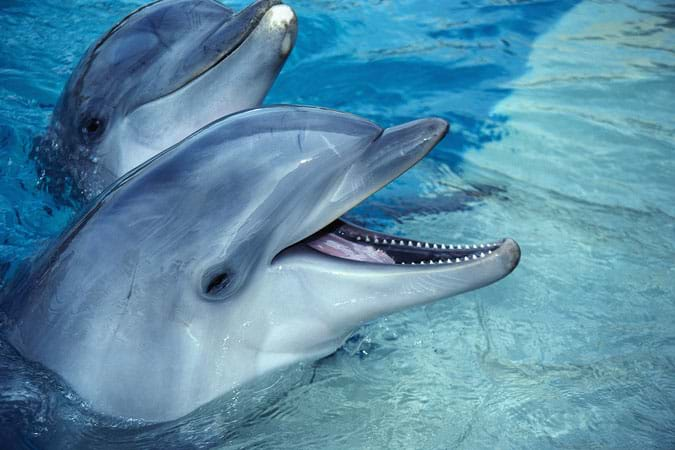
- Submarine and boats hull material that imitates dolphin and shark skin membranes
- Radar and sonar navigation technology and medical imaging inspired by the echo-location abilities of bats
- Swimsuit, triathlon and bobsled clothing fabric made with woven ribbing and texture to reduce drag while maintaining movement, mimics shark's skin
- Adhesives for microelectronics and space applications inspired by the powerful adhesion abilities of geckos and lizards
- Water filters designed like animal cell membranes to let certain things pass through while others are kept out
- Running shoes with technology learned from studying the mechanics of animal feet
- Super strong and waterproof silk fibers made without toxic chemicals by spiders
- Ceramics and windshields, after the mother of pearl material made by abalone mussels
- Underwater glue for slippery surfaces, as made by mussels
- Anti-reflective, anti-glare film used for flat panel displays, touch screens, lamps, and phone and PDA lenses replicates the nano-structures found in the eyes of night flying moths
- A better ice pick for mountain climbers designed after the woodpecker.
- Glow sticks made with light-up chemicals, just like fireflies
- Very efficient pumps and exhaust fans applying the spiraling geometric pattern found in nautilus sea shells, galaxies and whirlpools
Example inventions based on or inspired by plants
- Hook and loop material (Velcro®) inspired by cockleburs
- Solar cells inspired by plant leaves (photosynthesis, capturing energy from sunlight)
- A wind-driven planetary rover design that maximize drag, learned from the tumbleweed
- Self-cleaning exterior paint, tiles, window glass and umbrella fabric inspired by the slick leaves of the lotus flower plant and its natural ability to wash away dirt particles in the rain
- Reduced-drag propeller designs inspired by the spiral shape of kelp, which moves with the current rather than fight it, so much less energy is required to move water or ship
- Filter and clean water like a marsh
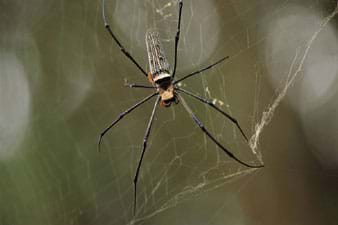
When biomimicry is well done, it is not just imitation, but inspiration using the design principles that nature has shown to be successful. In her book, Biomimicry: Innovation Inspired by Nature, Janine Benyus suggests that biomimicry can be especially applied to the field of environmentally-friendly design. For example, she looks to the production of waterproof silk by spiders. This silk is a tougher material than Kevlar and is produced in water, at room temperature, using no high heats, petroleum oil, chemicals or pressures.
Benyus suggests looking more to nature for sustainable ways to produce quality materials and processes. She outlines nature's seven "rules" (below, source: http://www.interfacesustainability.com/mimicry.html); following them might lead to ways we could engineer more a sustainable way of life for humans.
- Nature runs on sunlight
- Nature uses only the energy it needs
- Nature fits form to function
- Nature recycles everything
- Nature rewards cooperation
- Nature banks on diversity
- Nature demands local expertise
- Nature curbs excesses from within
- Nature taps the power of limits
Biomimicry can be used as a model for engineering designs that are useful to solve human problems. With the concerns for the environment, biomimicry may offer suggestions of how industrial designs can be more sustainable and appropriate for different climates and cultures.
Before the Activity
- Gather materials.
- Review the list of biomimicry inventions above, or if desired, research additional examples.
With the Students
- Divide the class into pairs of students.
- Ask the pairs to list three things both students have as common interests. These interests can be anything; examples: sports equipment, music, clothes, games, furniture, cars, etc.
- Next, have the students agree on one of those common interests for their design topic area.
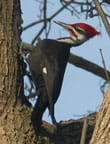
- Tell the students they have 10 minutes to brainstorm with their partners to come up with possible ideas for designs within their interest topic using biomimicry of animals. Ask the students if they can think of any animals that remind them of their topic. What unique features do those animals have? How could they design something that uses those features? Remind students that this type of brainstorming and building on each other's ideas is an important step in engineering a new, innovative product.
- As necessary, remind students of the brainstorming guidelines:
- No negative comments allowed.
- Encourage wild ideas.
- All ideas are recorded.
- Stay focused on topic.
- One conversation at a time.
- Build on the ideas of others.
- Pass out paper, rulers, markers and colored pencils to the students.
- Give the students 20 minutes to design and draw their new product that uses biomimicry. Have students be as detailed as possible. Ask them to label parts and materials in their design.
- Once they have finished design, have each team make a list of the special features of their design and which animal(s) inspired those features.
- Mount the drawing and design features onto a piece of construction paper.
- If time, have students role-play engineering companies and present their biomimicry designs to the class. Post their completed designs in the classroom or school resource center to share with others.
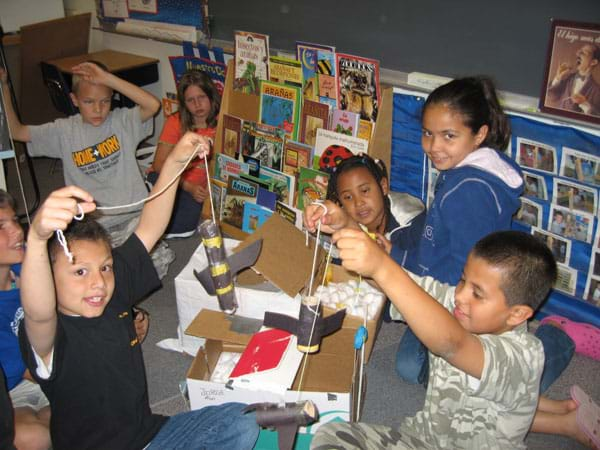
Vocabulary/Definitions
biodome: A human-made, closed environment containing plants and animals existing in equilibrium.
biomimicry: Copying or imitating the special characteristics of naturally existing things (animals, plants, etc.) in human-made designs, products and systems. From bios, meaning life, and mimesis, meaning to imitate.
brainstorming: A technique of solving specific problems, stimulating creative thinking and developing new ideas by unrestrained and spontaneous discussion.
design: To form or conceive in the mind. To make drawings, sketches or plans for a work. To design a new product. To design an improved process.
engineer: A person who applies scientific and mathematical principles to creative and practical ends such as the design, manufacture and operation of efficient and economical structures, machines, processes and systems.
engineering design process: The design, build and test loop used by engineers. The steps of the design process include: 1) Define the problem, 2) Come up with ideas (brainstorming), 3) Select the most promising design, 4) Communicate the design, 5) Create and test the design, and 6) Evaluate and revise the design.
imitate: To copy or follow as a model or example.
inspire: To be the cause or source of; bring about. An invention that inspired many imitations.
invent: To originate or create of a product of one's own imagination, ingenuity or experimentation. To invent the iPod.
mimic: To imitate or copy.
model: (noun) A standard or example for imitation or comparison. (verb) To simulate, make or construct something to help visualize or learn about something else (as the living human body, a process or an ecosystem) that cannot be directly observed or experimented upon.
Assessment
Pre-Activity Assessment
Warm Up: Ask students to come up with an argument that plants and animals have internal and external structures that function to support survival, growth, and behavior and how those structures can be useful to engineers.
Define it! Ask the class: What is biomimicry? Break down the word to help students guess at its meaning. "Bio" means life and "mimicry" means to imitate, so, "biomimicry" means to imitate life or nature, specifically to help design products and systems for human use. Once the class has come to a consensus, ask volunteers to suggest examples.
Activity Embedded Assessment
Thinking through the Design: Ask the students to identify which feature(s) of their design are inspired by nature. If possible, have them be specific about what type of animal or plant they are mimicking and have them describe inspiration (plant or animal characteristics, etc.).
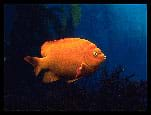
Is It Biomimicry? Give examples of design ideas, some that are biomimicry and some that are not. Have students vote whether or not they think the designs involve biomimicry. If the design does include biomimicry, as for a volunteer to explain the natural world source of inspiration. Examples include:
- Airplane wing? (Answer: Yes, after bird wings.)
- iPod? (Answer: No)
- Sonar navigation? (Answer: Yes, after bats.)
- Computer printer? (Answer: No)
- Hard coatings for car windshields? (Answer: Yes, after abalone mussels' mother of pearl coating.)
- Hulls of submarines? (Answer: Yes, after dolphin and shark skins.)
- Soft cushion for a chair? (Answer: No)
- Solar cell? (Answer: Yes, after leaves.)
- For additional ideas, see the Procedure: Background section.
Post-Activity Assessment
Re-visiting Argument: Have students re-visit and assess their arguments they made in the Pre-Assessment. Ask students to strengthen their arguments using what they learned in the activity.
Homework
Engineering Inventors Log: Have students think about everything in the natural world (animals, plants, cycles, processes) that might inspire them to create new products. Over the next week, have them look around their environment and make journal entries of design ideas and sketches for products that an engineer might create. Let them know that engineers often think of many ideas over a long period of time before they decide on one idea to develop. Often, they keep their evolving ideas in a dated engineering or inventor's journal with details on the materials and methods they might use to produce the product.
Troubleshooting Tips
If students have difficulty coming up with a design idea, help to steer them with suggestions. Or, assign a common class design area topic, such as sporting equipment or playground toys. After individual team presentations, have the class vote for the best design — the one they would choose invest in if they were paying clients.
Activity Extensions
Have students investigate an existing product that was inspired by nature. Require that they draw the product and describe the design features. For extra credit, have them provide creative ideas on how the product could be made even better.
In addition to learning from nature's animals and plants, we can learn from its processes and cycles. Ask students to think of the many natural closed loop cycles, such as the food chain, water cycle, hydrogen cycle, etc., which are models that recycle endlessly, providing long-term sustainability. Ask them to think of a way that people could do something better by mimicking a natural process or cycle. Hint: There is no waste in nature. Take a new look at pollution and manufacturing waste as a sign of inefficiency and source of unused resources.
As suggested by Janine Benuys in her book, Biomimicry: Innovation Inspired by Nature, nature provides us with a sustainable living example from which people can learn smarter ways to live. Provide students with nature's seven "rules" (see Procedure: Background section) and ask them to pick one and brainstorm how following that rule might lead to ways we could engineer more sustainable way of life for humans.
Reinforce math skills and help students learn more about scale drawing and engineering design. Have students imagine new engineering products and practice drawing their designs on graph paper to scale by assigning each grid square a real-life measurement value (such as cm or m).
Activity Scaling
- For lower grades, help students by suggesting ideas for products they can design, as necessary. Or, assign a common class design area topic, such as sporting equipment or playground toys. After individual team presentations, have the class vote for the best design — the one they would choose to invest in if they were the clients.
- For upper grades, have students make their drawings to scale with two "engineering" view drawings, a front and side view. Or, assign them one of the Activity Extensions.
Subscribe
Get the inside scoop on all things TeachEngineering such as new site features, curriculum updates, video releases, and more by signing up for our newsletter!More Curriculum Like This

Students are introduced to the classification of animals and animal interactions. This lesson is part of a series of six lessons in which students use their growing understanding of various environments and the engineering design process, to design and create their own model biodome ecosystems.

Students are introduced to the concepts of biomimicry and sustainable design. As students focus on applying the ecological principles of the previous lessons to the future design of our human-centered world, they also learn that often our practices are incapable of replicating the precision in which...
References
Benyus, Janine M. Biomimicry: Innovation Inspired by Nature. New York, NY: William Morrow and Company, Inc., 1997.
Biomimicry: Design Inspired by Nature. Interface Sustainability, Interface, Inc. (Informative interview with David Oakey with many good concepts to explore).
Biomimicry: Learning from Nature. (Much good information)
Biomimicry. TecEco Sustainable Technology, Australia.
Bionics. Last modified October 13, 2006. Wikipedia, the free encyclopedia.
Center for Biologically Inspired Design. Georgia Tech University.
Dictionary.com. Lexico Publishing Group, LLC. (Source of some vocabulary definitions, with some adaptation)
Faludi, Jeremy. Biomimicry 101. Posted October 13, 2005. WorldChanging Essays.
Grace, Deborah. Biomimicry. Spring 2001. Trimtab, Bulletin of the Buckminster Fuller Institute, Vol. 14, No. 2, Spring 2001.
Healy, Ann Marie. Another Coup for the Science of Biomimicry. Posted April 26, 2005. Z + Partners – Weblog. (Autoflex MothEye Anti-Reflective Anti-Glare film)
High-Tech Materials 101: Lotusan Paint by Sto Corporation (http://www.stocorp.com). Published October 2006. Dwell magazine, page 258.
Kennedy, Sean. Biomimicry / Bimimetics: General Principles and Practical Examples. Written August 2004. The Science Creative Quarterly, Issue Two, Sept – Nov 2006. (Source of Darcy Winslow quote [see second paragraph] and other background information).
Kolancinski, Richard M. and Roger D.Quinn. Design of a Biologically Inspired Martial Rover Based upon the Russian Thistle (Salsola tragus). Presented July 2004. Orbital Research, Inc., Cleveland, OH, and Department of Mechanical and Aerospace Engineering, Case Western Reserve University, Cleveland, OH.
Kurk, Fran, and Curt McNamara. Better by Design: An Innovation Guide: Using Natural Design Solutions. Published 2006. Minnesota Pollution Control Agency, St. Paul, MN. (An inspiring and comprehensive resource)
Polymers: Lizard Lessons. Prism magazine, American Association for Engineering Education. October 2005, page 19.
Rich, Deborah. Biomimicry: Taking on Nature's Way, Biomimicry shows us that Mother Nature really does know best. Published July 27, 202. San Francisco Chronicle.
Shore, Sandy. Technology Gets in Gear for Athletes: Companies Spend Millions to Give Products an Edge. Published February 11, 2006. Associated Press, Rocky Mountain News.
Copyright
© 2004 by Regents of the University of Colorado.Contributors
Katherine Beggs; Malinda Schaefer Zarske; Denise CarlsonSupporting Program
Integrated Teaching and Learning Program, College of Engineering, University of Colorado BoulderAcknowledgements
The contents of this digital library curriculum were developed under a grant from the Fund for the Improvement of Postsecondary Education (FIPSE), U.S. Department of Education and National Science Foundation GK-12 grant no. 0338326. However, these contents do not necessarily represent the policies of the Department of Education or National Science Foundation, and you should not assume endorsement by the federal government.
Last modified: February 9, 2021








User Comments & Tips